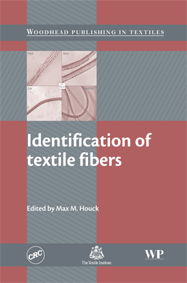Feb 10 2009
The diversity of fibre uses and the continuous development of new fibres is making identification increasing difficult. The demand for sophisticated fibre identification methods in response comes from diverse areas of the textile industry noticeably from forensic scientists and textile conservationists.

The foundation of Identification of textile fibers from Woodhead Publishing is a review of the main types of textile fibres with specific chapters focusing on natural animal, synthetic and high performance fibres along with their structure characteristics and identification. The inclusion of an examination into the use of clarification systems and production methods in identifying manufactured textile fibres further extends the scope of this valuable new title.
A range of methods of fibre identification are examined considering limitations and strengths as well as future trends. This comprehensive new title incorporates a discussion of alternative and specialised textile fibre identifications tests which includes an investigation of scanning electron microscopy. The forensic examination of textile fibres is assessed with particular attention paid to polarized light microscopy and fluorescent microscopy.
Identification of textile fibers is an important text for forensic scientists, police and lawyers who may be involved with the use of textile fibres to provide evidence in criminal cases. It is also relevant for textile designers, technologists and inspectors wishing to assess fibre quality and understand fibre damage.